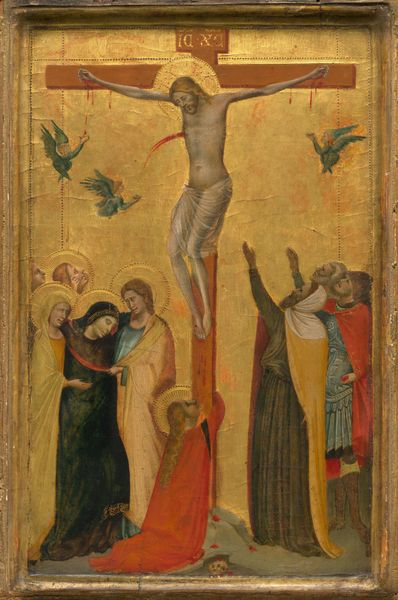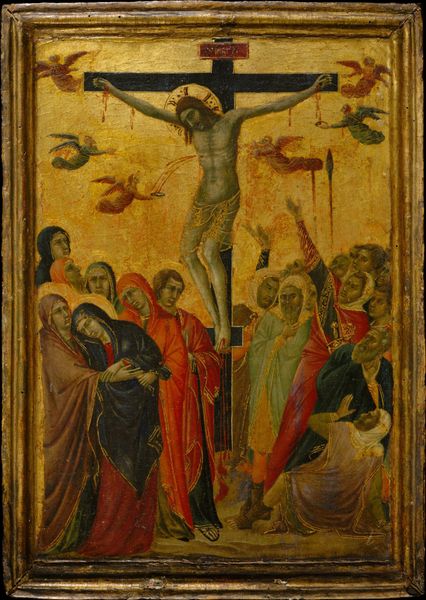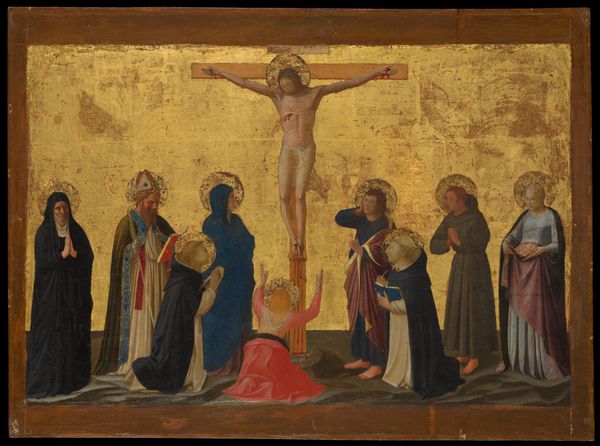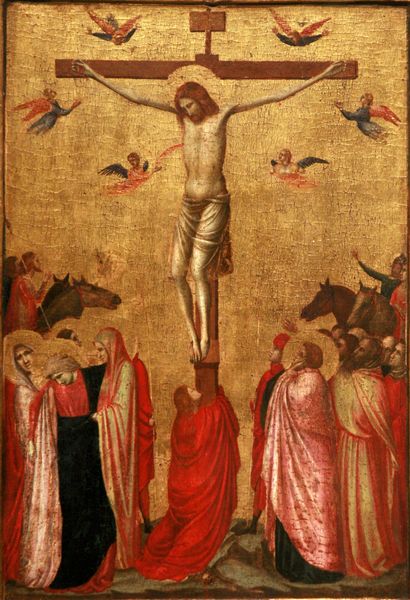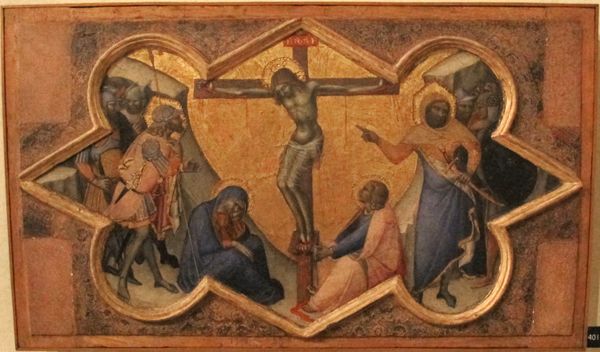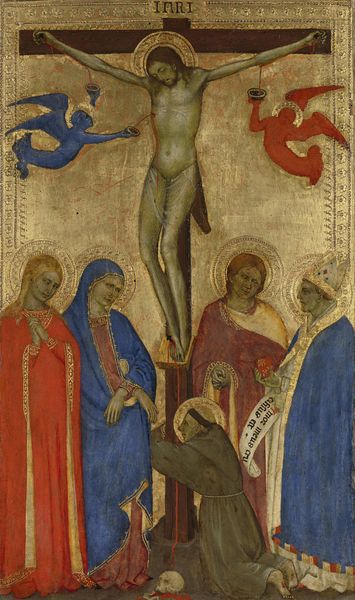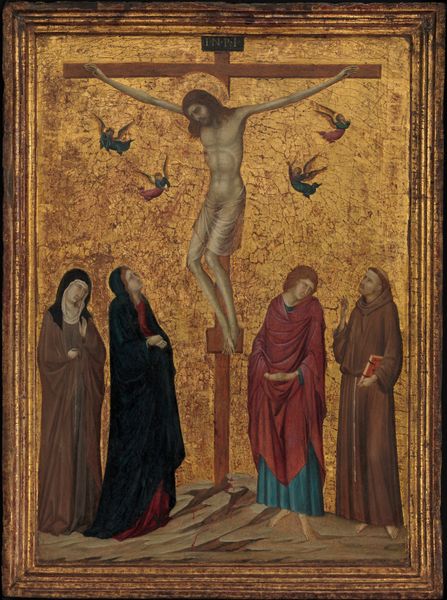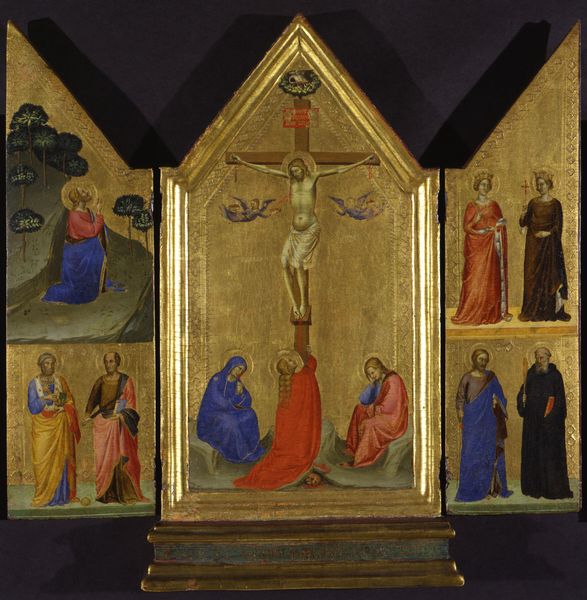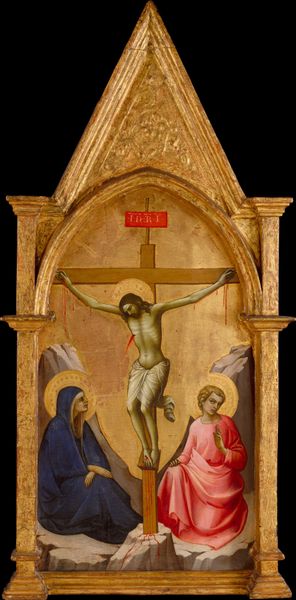
#
abstract painting
#
possibly oil pastel
#
handmade artwork painting
#
oil painting
#
acrylic on canvas
#
street graffiti
#
underpainting
#
painting painterly
#
watercolour illustration
#
watercolor
Dimensions: painted surface: 31 x 38 cm (12 3/16 x 14 15/16 in.) overall: 33.85 x 41.1 cm (13 5/16 x 16 3/16 in.) framed: 37.2 x 45.4 x 5.7 cm (14 5/8 x 17 7/8 x 2 1/4 in.)
Copyright: National Gallery of Art: CC0 1.0
Editor: This is Paolo Veneziano’s *Crucifixion*, made around 1340-1345. The flattened gold background creates an otherworldly effect. What sort of symbolism is present? Curator: Notice how the gold renders the scene timeless, raising it above the everyday. What do you make of the angels, with their stylized grief, collecting Christ's blood? Editor: They're almost bird-like. Are they meant to be portraits, or more symbolic? Curator: Symbolic, certainly. Consider the role of angels in medieval art—messengers, intermediaries. These aren't individuals, but representatives of divine grief and salvation, participating in a ritual of sacrifice and redemption. Note, too, how the figures at the base of the cross express their grief. What emotions do their postures convey? Editor: The way the women are huddled, seems like they are sheltering one another in their sorrow. But why the stark contrast in expression from the soldiers to the right? Curator: Precisely. This juxtaposition invites contemplation: belief versus doubt, empathy versus detachment. It highlights the emotional and spiritual chasm opened by Christ’s sacrifice. It’s also worth considering that color functioned symbolically: blue for mourning, red for royalty or divine love. Editor: It is like a symbolic drama frozen in time. Curator: Yes, a layered narrative. Do you see how Veneziano skillfully uses symbolic language to tap into deeply rooted emotions? Art as cultural memory! Editor: I see that the art reminds the viewers about the cultural norms for that specific point in time and its relevance. I had not picked up on some of those meanings!
Comments
No comments
Be the first to comment and join the conversation on the ultimate creative platform.

